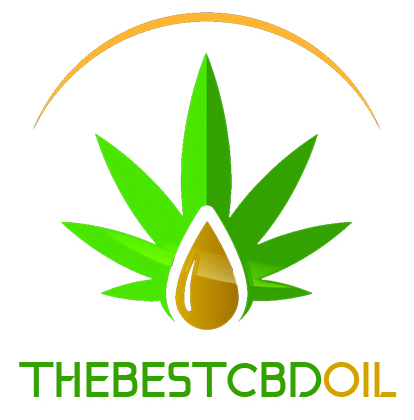round hot red pepper in a glass jar and fresh chili peppers on old wooden background, selective focu
Capsicum annum is a small spreading shrub originally cultivated in the tropical regions of the Americas but now is grown throughout the world. The small red fruit commonly used to accentuate chili owes its stinging pungency to the chemical capsaicin. This was isolated by chemists more than a century ago and constitutes approximately 12% of the chili pepper. This fruit has been used for medicinal purposes by the native peoples of the American tropics for hundreds of years.
More recently, various preparations have become available over the counter for the treatment of peripheral neuropathies and chronic musculoskeletal pain. Capsaicin produces highly selective regional anesthesia by causing degeneration of capsaicin-sensitive nociceptive nerve endings, which can produce an anti-inflammatory effect. Capsaicin can cause a burning sensation when it comes in contact with human flesh, and also in the digestive tract.
Turmeric
Turmeric is a root. It looks a lot like ginger, but it’s bright orange inside. It’s available as whole fresh fruit, or more commonly in North America, as a dried, ground spice.
Turmeric has been used for 4000 years to treat a ton of different conditions ranging from infections to cancers to inflammation to digestive problems. Amazingly, in a 2009 study, researchers found that turmeric eased the pain as much as ibuprofen did in patients with arthritis.
Turmeric can be enjoyed as a tea, or used in recipes (many Indian-inspired dishes call for turmeric). You can also buy curcumin (the powerful compound in turmeric) in capsule form.
Ginger
Ginger is a very famous spice which 80% is grown in China. Ginger has been used in traditional medicine as an anti-inflammatory agent for musculoskeletal diseases in China for more than 2,500 years. This plant contains numerous known ingredients such as gingerols, beta-carotene, capsaicin, caffeic acid, and curcumin. Furthermore, salicylate is one of the other components which have been found in ginger [46]. It has been revealed that ginger inhibits both cyclooxygenase (COX) and lipoxygenase together, to prevent leukotriene production.
One study in 2010 has been demonstrated that daily intake of ginger led to a moderate-to-large decrease in muscle pain following exercise-induced muscle injury. Their results have shown ginger’s efficacy as a pain reliever.
Swedish massage with aromatic ginger oil resulted in significant reductions in pain intensity and disability through the period of valuations, representing immediate, short and long term efficiency.
Tea
Dealing with ongoing pain can grate on your nerves and leave your whole body feeling tight and wound up. Try chamomile tea to soothe your nerves and promote sound sleep. Tea containing the herb valerian acts as a natural muscle relaxant. Teas containing the flowers of the hops plant are believed to calm anxiety and tone down feelings of irritability. To combat inflammation, look for teas containing the root turmeric or its pigment curcumin. Boswellia is another plant believed to contain powerful anti-inflammatory agents. Plantar Fasciitis sufferers often confess that they know they’ve become snappish with their loved ones because coping with the pain in their heels has put a real strain on their nerves. Herbal teas can help you relax and regain a feeling of well-being, enabling you to interact in a sunnier fashion with friends and family again.
CBD Oil
The use of cannabis as a treatment for musclo-skeletal pain in western medicine dates to the 1700s. CBD oil one of the non-psychoactive components of cannabis has shown lots of improvement in the treatment of arthritis, medicinal qualities of CBD oil, it’s also known as cannabidiol plays a role in immune system modulation, which naturally makes it helpful for an autoimmune condition like rheumatoid arthritis
Researchers think that CBD interacts with receptors in your brain and immune system. Receptors are tiny proteins attached to your cells that receive chemical signals from different stimuli and help your cells respond. This creates anti-inflammatory and painkilling effects that help with pain management. This means that CBD oil may benefit people with chronic pain, such as chronic back pain.
Further research still needs to continue being conducted, in order for the general public to become greater aware of its healing abilities.
Devil’s claw
Devil’s claw has a long history in Africa as an herbal treatment for arthritis, lower back pain, and other inflammatory disorders.
The root is the part of the plant used for medicinal qualities; harpagide and harpagoside are the active ingredients. Both of these components are iridoid glycosides that are analgesic (pain-relieving) and anti-inflammatory.
Devil’s claw is used in capsule form, prepared as a tea and is used in ointments for external use. The recommended dose for Devil’s claw extract (containing 3 percent iridoid glycosides) is considered safe at 750 mg taken three times daily.
It is available as a tea, and as a tincture (use 1 teaspoon up to three times daily). It should not be taken with blood-thinning medications, nor should be taken by pregnant women or young children, nursing mothers, or by individuals with kidney or liver disease or digestive system ulcers.
Massage
Massage can offer some immediate comfort as well as assist the muscles out of spasm. Deep tissue massage or localized deep pressure massage has proved most effective for pain relief. A friend or partner with a steady elbow or strong thumbs are the best. It’s likely you will know exactly where you want the pressure. Once a day after the hot bath is ideal, as more than that will perpetuate the superficial bruising that is likely. Massage and acupuncture will also assist in restoring the numbness or “lame” feeling you likely have in your toes and/or leg. If you have another form of massage that is your favorite, by all means try it! What I’m finding is that I must take the “all of the above” mode of healing in order to address this. No one remedy is enough on its own.
